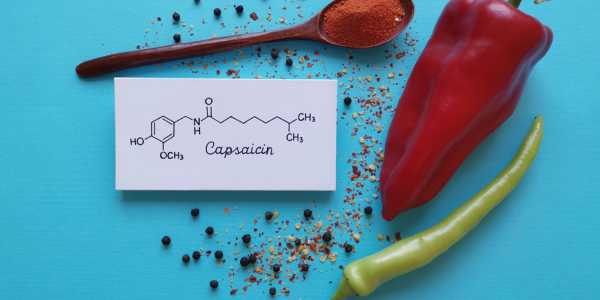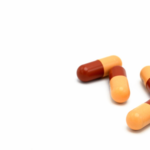
Capsaicin is a compound derived from peppers known for its prevalent use in pain-relieving medication. It is instrumental in addressing a certain type of pain recognised as neuralgia. Neuralgia is felt as shooting or burning pain in the nerves. It is characterised by pain that occurs from the nerves near the skin surface. Capsaicin provides relief in nervous system problems including trigeminal neuralgia, postherpetic neuralgia (shingles) and diabetic neuropathy. Ongoing research on the applicability of Capsaicin assumes importance when viewed in light of the incidence of trigeminal neuralgia (TN) in India. As a recent study in north India concluded, TN is more common in females than males and is more likely to occur in rural populations than urban populations. A case for the applicability of Capsaicin in the treatment of these cases (and more) can be readily made. It is widely administered and medically available in the form of creams, lotions, patches and solutions.(1)

Common Uses
Capsaicin plays a crucial role in the reduction of chronic pain felt as a result of conditions such as arthritis, diabetes and migraines. It is also used in treating minor pain associated with muscle sprains and nerve pain caused by the onset of diabetic neuropathy of the feet. Its role is limited in relieving but not curing any of these conditions. Capsaicin is also known for its involvement with other clinical practices such as the treatment of obesity, gastrointestinal disorders, cancers, etc. The potential of Capsaicin in the treatment of various ailments is yet to be known optimally.

How it works
Capsaicin influences the neurotransmitter that is responsible for communicating pain signals to the brain, thereby reducing the perception of pain as a result. Capsaicin has proved to be effective at reducing the onset of Substance P, a pain transmitter in the nerves responsible for transmitting pain signals from nerve endings to the brain. Substance P is also known for its contribution to activating inflammatory substances in joints. Thus, Capsaicin is used to suppress the pain signals induced by Substance P.
Side Effects
Side effects of applying Capsaicin can be manifested in the form of burning sensation, itching, redness, swelling and pain. The side effects so experienced generally disappear with continued use. Exposure to hot water and hot weather is to be avoided. In circumstances where capsaicin is inhaled, it causes respiratory distress in the form of sneezing and breathing trouble. Serious side effects are rare in occurrence and must be addressed with consultation with a healthcare professional.
With no reported drug interactions, the use of Capsaicin is regarded as safe with no major safety concerns associated with its application. A burning sensation can be felt when Capsaicin comes in contact with the skin due to its tending to bind to specific receptors in nerve ending called VR1. This burning sensation is not associated with any tissue damage.
Warning: – Capsaicin must be kept away from the eyes, mouth and open wounds as it may irritate those areas. It is advised not to be used in cases where the patient is allergic to chilli peppers. Any discomfort must be met with the washing of the treated skin area with soap and cool water. Cases where severe pain, burning sensation, swelling or blistering of skin must be addressed with medical attention.
Committed to healthcare
Shubham Pharmachem Pvt. Ltd. stands by its mission of providing value-added services and solutions to its consumers. The company is in the business of export and distribution of a wide range of pharmaceutical products including high-quality API’s, herbal extracts, nutraceutical ingredients, probiotics and cosmetic ingredients. Armed with all necessary certifications and accreditations, Shubham Pharmachem caters to a wide spectrum of medications for ailments, chronic diseases and conditions. Strict adherence to regulatory policies, timely delivery and exemplary customer care have been the cornerstones for the steady progress of this dynamic organization.
Capsaicin is a part of our varied list of herbal extracts at Shubham Pharmachem Pvt. Ltd.
For more information on the available products, visit www.shubham.co.in
Disclaimer:
Shubham Pharmachem’s blog & articles have been written with the information gathered from approved medical journals and websites online. Our research and the technical team strives to provide relevant information through such articles. We strongly advise readers to not consume or administer any medication without prior consultation with their doctor.
References:
- https://www.healthline.com/health/capsaicin-cream
- https://www.mayoclinic.org/drugs-supplements/capsaicin-topical-route/description/drg-20062561
- https://www.versusarthritis.org/about-arthritis/complementary-and-alternative-treatments/types-of-complementary-treatments/capsaicin/
- https://www.drugs.com/mtm/capsaicin-topical.html
- https://www.ncbi.nlm.nih.gov/pmc/articles/PMC6883899/
- https://www.uofmhealth.org/health-library/ut1025spec





